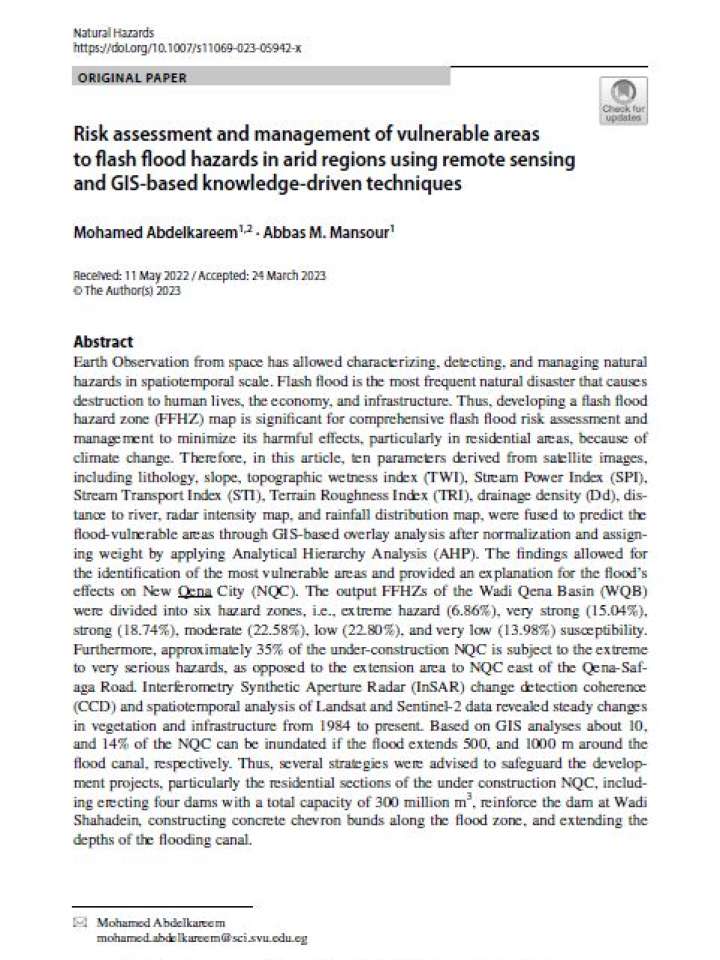Risk assessment and management of vulnerable areas to flash flood hazards in arid regions using remote sensing and GIS-based knowledge-driven techniques
This study aims to (a) delineate the susceptible areas to the flash flood hazards of the Wadi Qena Basin (WQB); (b) assess the effects of the flash flood on the under-construction urban areas and infrastructures of the NQC; (c) identify the safe and suitable land for future development of the downstream area, especially, New Qena City (NQC); and (d) provide strategies and solutions for managing and mitigating the effects of flash flood hazards to protect the Qena cities and the other development areas in the basin.
The findings allowed for the identification of the most vulnerable areas and provided an explanation for the flood's effects on New Qena City (NQC). The output FFHZs of the Wadi Qena Basin (WQB) were divided into six hazard zones, i.e., extreme hazard (6.86%), very strong (15.04%), strong (18.74%), moderate (22.58%), low (22.80%), and very low (13.98%) susceptibility. Furthermore, approximately 35% of the under-construction NQC is subject to extreme to very serious hazards, as opposed to the extension area to NQC east of the Qena-Safaga Road.
Explore further

